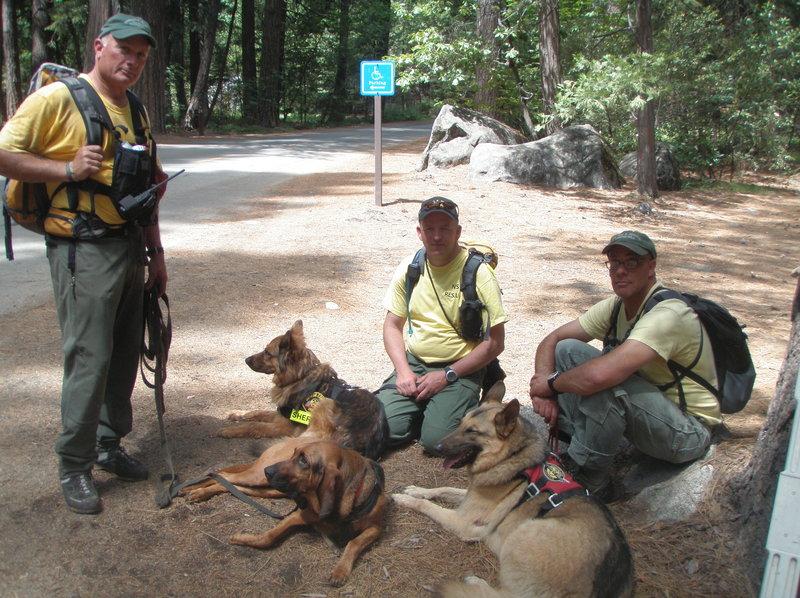YOSEMITE – The names belie their expertise: Goose, Deuce and Moose. They come from a highly select group of more than a dozen working dogs including Labrador and Golden Retrievers, German Shepherds, an Australian Cattle dog, and one lone Bloodhound.
They respond to names like Penny, Chipper, Rondo and Otis. Each has a special power, like scent-specific trailing, water recovery, or cadaver detection. Their tags say Murphy, Ari, Zulu and Joe Fox.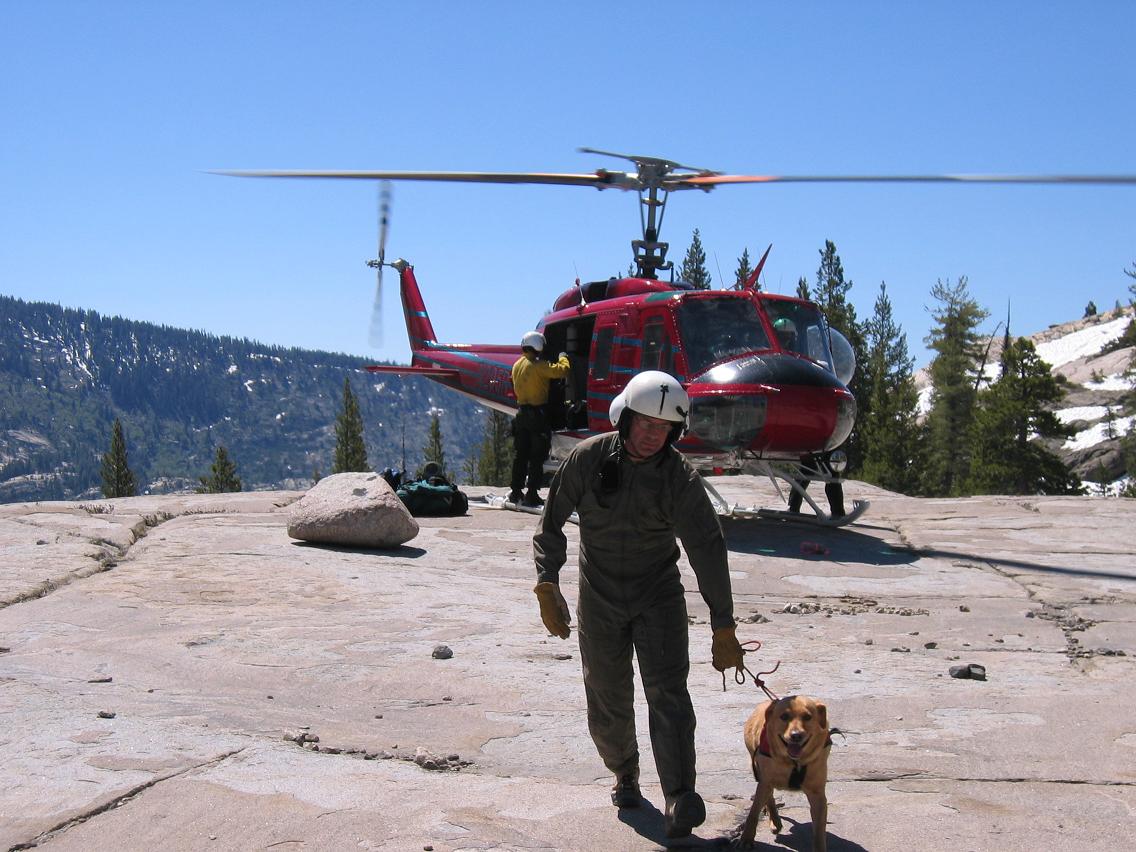
Together with their trainers, who are also their constant companions, these four-leggers are part super-hero, part canine. They are Yo-Dogs, established in 1998 as a critical element in the effectiveness of Yosemite Search and Rescue (YOSAR).
YoDogs can participate in searches, recovery, and swift water rescue, in a season that lasts from April through October, during which they remain on call 24/7.
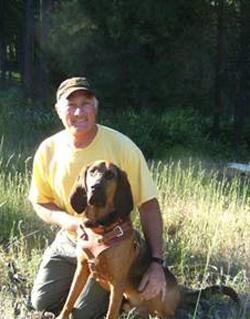
“They call it a national park and that makes it sound like a nice sweet place, but there are so many things about nature that can be harsh if you’re not prepared for it,” explains the 13-year YOSAR veteran.
“The dogs are used specifically to cover large areas quickly, to find lost subjects while they’re alive and well. Dogs are able to do that much quicker than our foot searchers, so if the terrain is large and rough in the back country, they can get a little more area covered, with less people, on the initial start of the incident.”
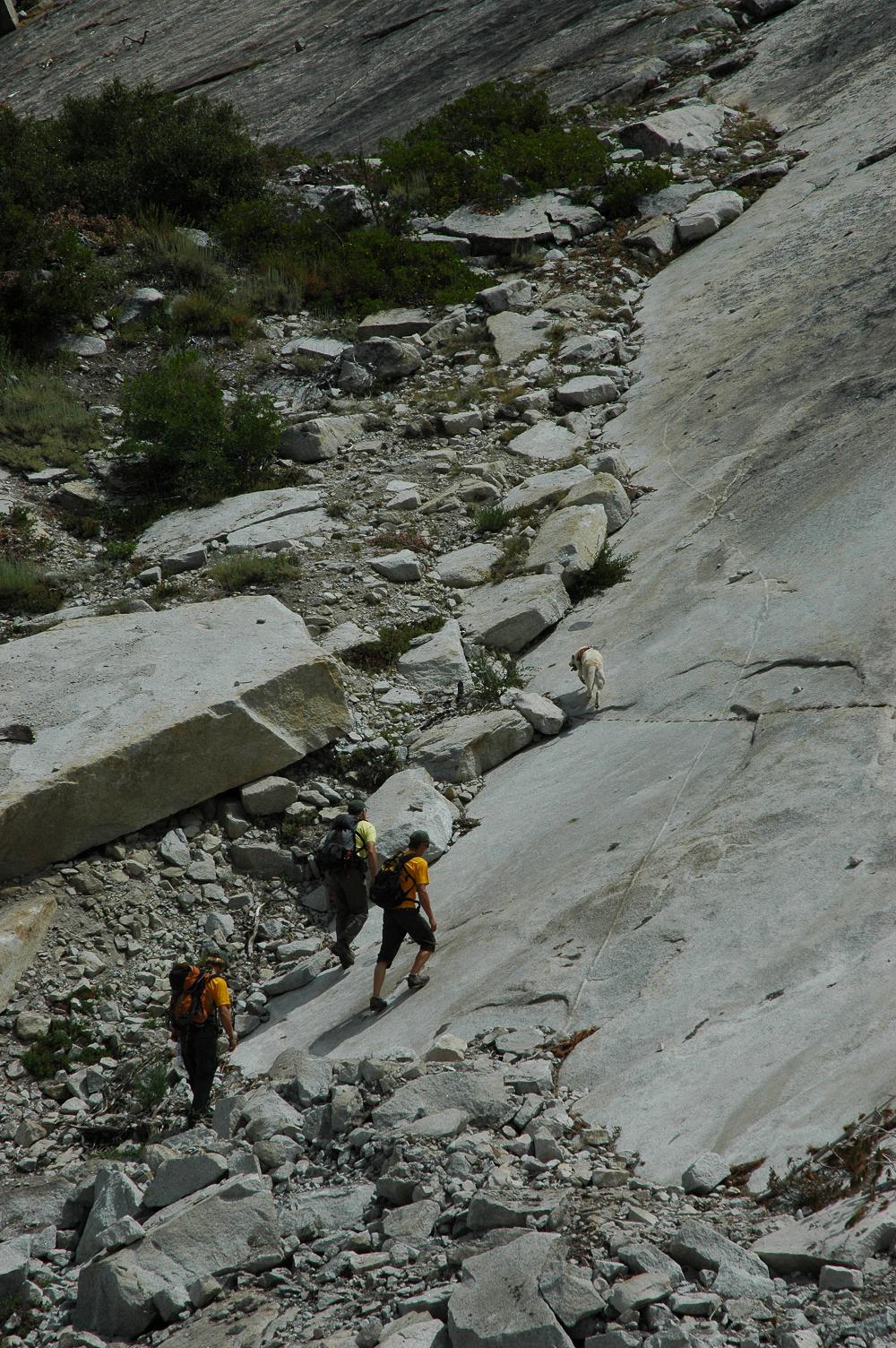
“Otis is a scent-specific trailing dog,” he says. “We work cases where we have an article that is scent-specific to the missing subject, and we have a location where the subject has left or walked from that gives us a starting point.”
Wait has been a “dog person” as long as he remembers, and evolved into a wilderness expert, making him perfectly suited to be part of the YOSAR team.
“I always had bird hunting dogs as a young person,” Wait recalls. “I loved and wanted to work with dogs and believed that search and rescue with a dog could be a good fit for me. I’ve always been a lover of the wilderness, avid backpacker and outdoorsman, and so having some dog training experience and back country skills was a good fit.”
With 12-18 or more trainers and dogs on call to YOSAR during the season, Wait isn’t the only dedicated member of the dog handling group to specialize in wilderness survival.
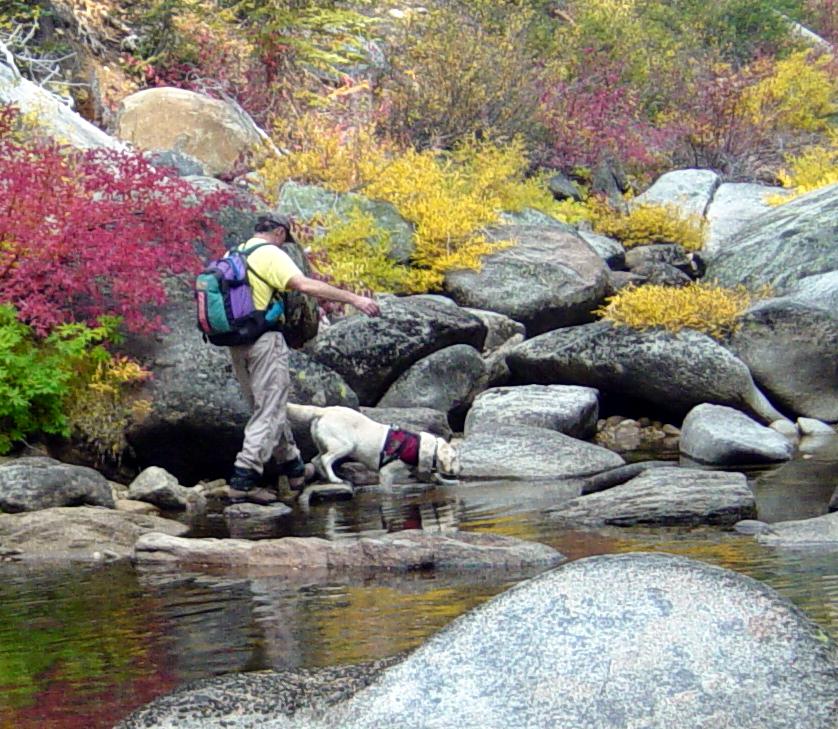
While YoDogs come in a variety of breeds, they have specific traits in common, including a high drive and the need for a lot of activity and “constructive social time.”
“A working dog is wired a little different,” stresses Wait. “Our dogs primarily are never left alone. They are with us the majority of the time and are not left to run free the way pet dogs can be. Their activities are more controlled to keep that drive and focus.”
Wait says virtually every day with Otis, as with any working dog, turns into a training session.
“It may be a little obedience training. Or maybe you want your dog to find your stuff, so you throw keys or soda bottle tops out into the yard and your dog can go find them. These are all disciplines or things you have trained your dog to do; things where you’re making the dogs think and work with you as a team member in its free time.”
Otis must be ready when the call for help comes in. One common scenario the YOSAR teams face nearly every year is that of a missing back country traveler whose itinerary puts him or her out in the wilderness for several days, hiking different peaks and stopping by different lakes along the way. When that subject fails to return at the scheduled time, notifications are made and searchers begin to assess whether the individual or group is safe, or lost.
“It’s kind of a process of elimination,” Wait says of the searching process and area. “It can be large and spread out, and very labor intensive. Once we begin to reduce the area, then efforts intensify where we can start picking up clues and find our subject. It’s pretty exciting to see those come to an end; it’s like a ‘needle in a haystack’ thing.”
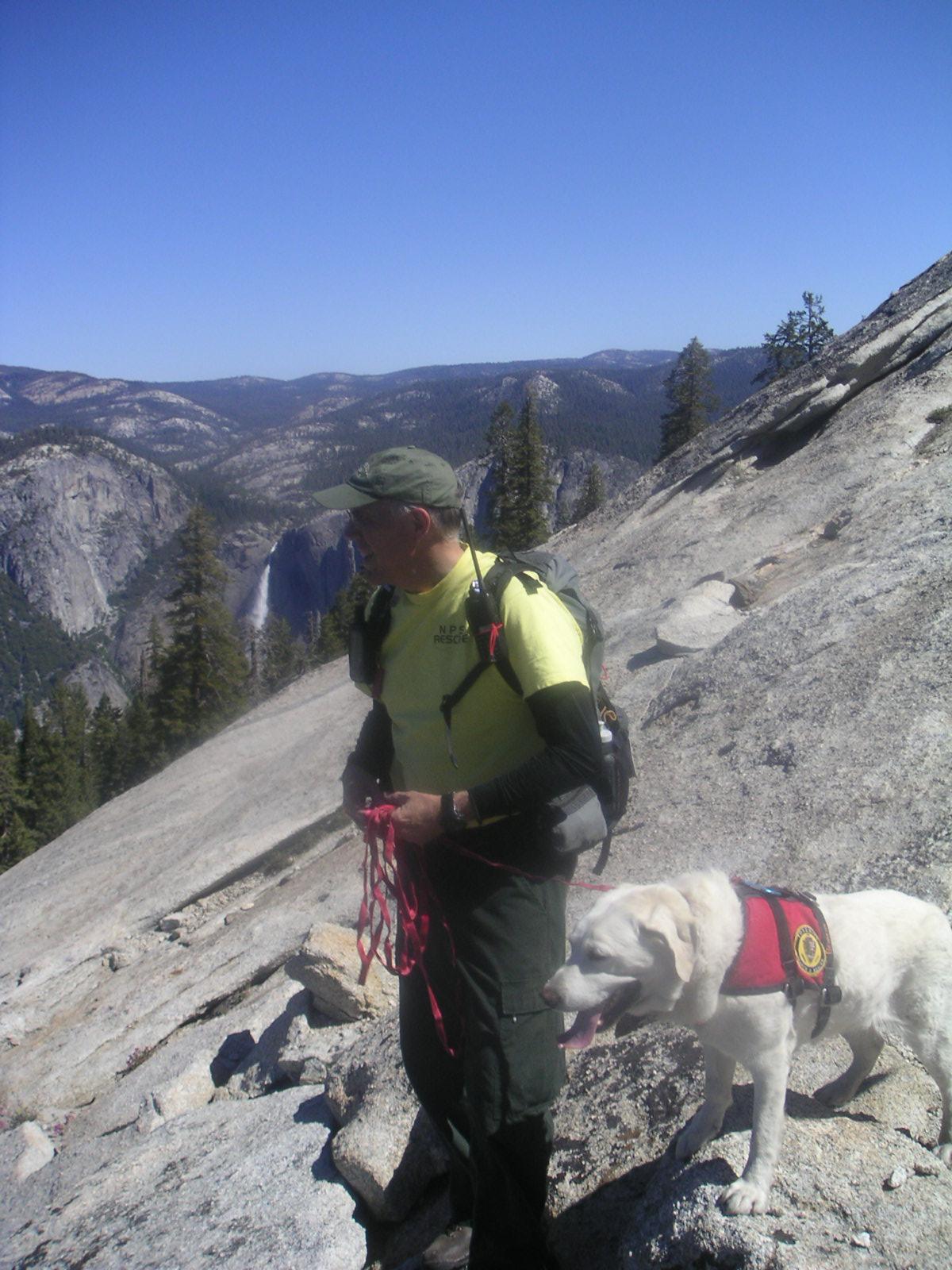
When a search becomes a recovery, another team besides Otis and Wait is called in.
“Just about each year, somebody will slip into the river and then we’re trying to locate, within a few yards, the area of the river where this person may be. So when the water is safe to enter, that team at Yosemite can get in and make a recovery.”
The uber-experienced outdoorsman reminds YNP visitors that the human desire to connect with nature should be tempered with caution, especially when hiking alone.
“The advice would be, just use caution. I like to see people get out and enjoy the wilderness and I understand how exciting it is, and how nice and quiet it is to go by yourself and watch the sunrise. But you need to use a little more caution if you’re by yourself.”
The father of three boys, Wait is stricken when an adventure becomes tragedy.
“When we do a recovery on a young person, it’s hard. I know people are having fun and I want them to experience the wilderness. People sometimes make poor choices and it puts them in a spot. I understand the wilderness can be cruel.”
Despite the hardships, Wait believes the upside of being in YOSAR prevails. “I get a lot of the joy from helping, and from giving of my time and my talent. We take pride in doing what we do well. We maintain our skills and certifications to a degree that we stay at the top of our game. We go out and do the best we can. Working with the Park has been a pleasure.”

